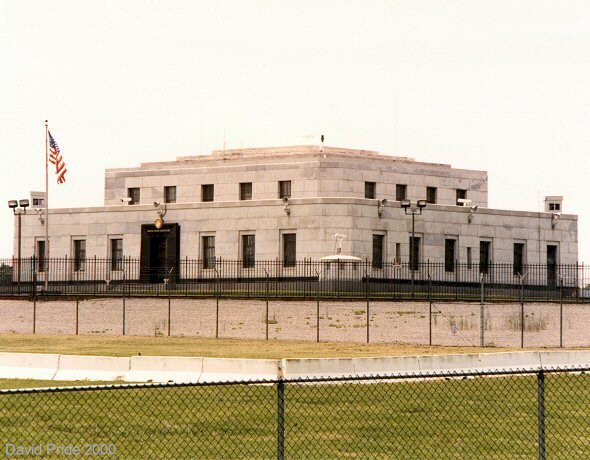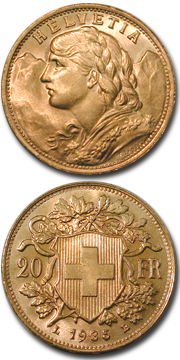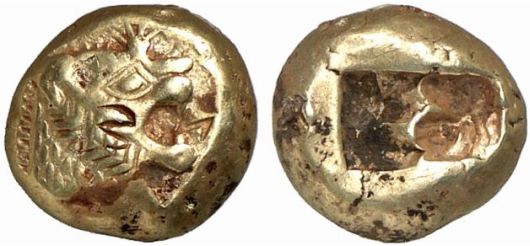Gold Financial Perspective - May 2009
Gold Financial Perspective - November 2009>
Gold Financial Perspective - August 2009>
<Gold Financial Perspective - March 2009
<Gold Financial Perspective - January 2009
H.S. Perlin Co., Inc.
Gold Financial Perspective
Volume 5 Issue 3 - May 2009
This newsletter is designed to provide timely and beneficial financial information. Current economic factors affect your personal financial decisions as well as your decisions for gold ownership today. We hope you find the enclosed information helpful and informative.
ONE EXPERT'S OPINION…

IS NOW THE TIME TO BUY GOLD?
By Joel Perlin
Everybody wants to know. Is now the time to buy gold? I see current conditions influencing the price of the precious metal in two possible directions. Both up and down. A handful of hedge fund players hold substantial positions in the SPDR gold ETF that influences the futures market price of gold. This can help support a strong gold price even up to $1,200 oz. if more hedge fund money continues to flow in this direction. In the same breath, retreat from these "strong player" positions, and a large shift of investment funds to other asset classes could move the price down as low as $800.00 oz. Not to worry. It's okay. Once we exit the current deflationary cycle, I believe the inflationary consequences of printing trillions of fiat paper dollars, along with other factors, will send the price of gold soaring. It is this expert's opinion that current market conditions make this an advantageous time to purchase gold both as a safe store of value in troubled times, as well as an asset class that will increase in value as the demand from institutional investors and retail investors drives up the price. I predict gold at $1,500 to $2,000 per oz. That makes $800 to $1,200 oz gold look very attractive indeed. Yes, now is the time to buy physical gold.
How Much Gold is Really In Fort Knox?
With no independent audits since the Eisenhower era, how can we be sure that our nation's monumental gold stores are still in the depository or even remain in the possession of the U.S.?
In 1936 the United States completed construction on one of its most well-known and secure storage facilities. It now stands within the confines of several security fences, manned by a plethora of armed troops with a barrage of high-powered weapons at their disposal. Within these reinforcements lies a granite-lined vault with a massive, 22-ton, blast-proof entryway. This impenetrable fortress is the United States Bullion Depository at Fort Knox, Kentucky, commonly called Fort Knox.
Fort Knox has housed such priceless national treasures as the Declaration of Independence, the Constitution, the Gettysburg Address, three volumes of the Gutenberg Bible and one of four known copies of the Magna Carta. But, the primary purpose of the high-security vault has been to store the country's largest stores of U.S. government gold reserves.
The depository received its earliest shipments of gold bullion and bars throughout the first half of 1937 via 40 trainloads sent by registered mail. Today, Fort Knox reportedly holds a stockpile of 147.3 million troy ounces in gold bars worth upwards of $137 billion dollars. However, the valuable store has not been verified by an independent third party audit in nearly fifty years.
 This frightening fact has led many to wonder, is the gold still there? And if it is, why has the government halted any attempt to verify its existence?
This frightening fact has led many to wonder, is the gold still there? And if it is, why has the government halted any attempt to verify its existence?
A U.S. Treasury spokesman disclosed to the New York Times that Fort Knox's gold holdings are audited every year by the Department of Treasury's Office of Inspector General. He revealed that independent auditors oversee the auditing process, but are not given access to the vault. In addition, the auditing process has not been defined for the American public. Though the treasury claims that Fort Knox is subjected to a yearly audit, there is no way for citizens to know how it is executed or even if the auditors physically examine the gold stores.
There have been various attempts to independently audit the gold at Fort Knox since Eisenhower's presidency, all of which have been denied. In September of 1974, a month after President Nixon resigned from office, several congressmen and news representatives were given clearance to visit the bullion depository at Fort Knox, after great concern had risen over the soaring cost of the Vietnam War. This was the first time average citizens were allowed to enter the depository. Notably, no gold experts were allowed to attend. Those present had limited sight of the gold as they were only allowed to view the bullion through small peepholes. Some even reported that the color of the gold seemed "off."
Today, Texas Congressman Ron Paul is refueling the fire for an independent audit of the Federal Reserve System. "It has been several decades since the gold in Fort Knox was independently audited or properly accounted for [...] the American people deserve to know the truth." Paul has accumulated 21 co-sponsors for a bill that will lead to the audit. Pressure toward the move has further increased due to the global banking collapse and a widespread interest in a return to the gold standard.
This action has also proven to be timely with China's recent publication of its own gold reserves, which have risen to 1,054 tons making the country the fifth largest governmental holder. The United States tops the chart with 8,133.5 tons, followed by Germany with 3,412.6, France with 2,508.8 and Italy with 2,451.8 tons.
The Attributes of Gold: Security
Gold offers a kind of protection that no other investment or asset can match
Security is defined in monetary terms as "financial independence; or the defense against financial failure." While gold serves as a secure asset in these terms, it also embodies a wider sense of the concept. Gold additionally provides security as it is described in its formal definition, as "a freedom from danger, fear or anxiety."
In these times of insecurity and vulnerability, gold serves as a financial safe harbor. Whenever there is political or social unrest around the world, people flee to tangible assets and away from government currencies for various reasons:
 Gold has intrinsic value, and will always maintain its worth even as other currencies lose theirs. The fiat monetary systems of the modern world do not back their currencies with valuable commodities. Fiat currencies maintain their values in two ways: the relative scarcity of their money in circulation and the faith placed in it by the people who use it. With no limit set for printing of fiat currencies, the scarcity factor is marginalized if not eliminated. Faith alone cannot give something worth. Because of this instability, contemporary currencies are seriously in danger of losing some or all of their value, leaving gold as one of the few safe alternatives.
Gold has intrinsic value, and will always maintain its worth even as other currencies lose theirs. The fiat monetary systems of the modern world do not back their currencies with valuable commodities. Fiat currencies maintain their values in two ways: the relative scarcity of their money in circulation and the faith placed in it by the people who use it. With no limit set for printing of fiat currencies, the scarcity factor is marginalized if not eliminated. Faith alone cannot give something worth. Because of this instability, contemporary currencies are seriously in danger of losing some or all of their value, leaving gold as one of the few safe alternatives.
Gold protects investors from the vulnerabilities of financial institutions. As news headlines continue to reveal the widespread trouble of the banking system it is now more important than ever to have a way to secure personal wealth that is not affected by the strength of our banks. Gold holders can choose how to store the asset, which allows for a safe alternative to the risks of traditional banking.
Gold is the only asset class that has been accepted as a legitimate and permanent storehouse of value for over three thousand years. With other investments, like bonds, treasuries and CDs the investor is loaning money, which is subject to the ability of the government or borrower to pay off their obligations. When you own physical gold, there is no debt obligation and the investment therefore cannot be defaulted upon. Physical gold provides pure asset value, thereby giving a portfolio protection from these other investments.
Gold is portable and liquid. This makes it possible to exchange it for currency whenever and wherever the need arises. This characteristic is not only practical for investors, but provides a level of security that reaches beyond convenience. Historically, gold has many times provided a ticket to freedom for persecuted peoples around the world. It has done so because as an internationally acknowledged valuable asset, it has a greater capacity for exchange than any one country's currency.
Gold not only serves as a secure asset, but also provides a symbol for security in religious and cultural gift giving. In Indian, Persian, Russian and various other cultures around the world, gold gift giving is a popular practice. The tradition is not only indicative of gold's inherent value, but of the strength of the symbol. In its gift form, it is emblematic of prosperity and security for the gift receiver. The symbol further emphasizes the faith needed to protect value. Gold has the kind of multicultural and multinational faith that fiat monetary systems can and will never match.
All of these aspects set gold apart from other currencies and investments, giving it a level of strength and security that investors need in these turbulent economic times.
Gold Around the World: Switzerland
How will Switzerland's downsized gold reserves affect its economy in the current financial climate?
Switzerland is known globally for having one of the world's most stable economies despite its land-locked borders and relative lack of size. Unlike the financial boosts that sea-bordering nations receive from ports and shipping, the country's economic success is alternatively derived from its thriving banking industry. The Swiss policy of financial secrecy and long-term security has led investors from all corners of the earth to anchor their funds in Switzerland, making the nation heavily dependent on foreign investments. With such strong ties to their specialization in currency, it is no surprise that the Swiss' treatment of gold has also attracted global attention.
Swiss ties to gold were established long before Switzerland became a recognized nation. Inhabitants of the region began using gold as currency as early as 58 BC, when the Helvetii Celtic Tribe was absorbed into the Roman Empire. The powerful empire facilitated the widespread use of the Aureus gold coin thereby bringing gold currency to most areas of what is now modern Europe. Greater bonds to the precious metal were established with the creation of Swiss Cantons, or states, and the onset of Christian rule and the in the 4th century, which incorporated gold into much of its religious art and imagery. The country's bonds with gold translated to innovative banking between the 16th and 18th centuries, when French Protestants fled persecution in their home country and incited the beginnings of a new banking system in Switzerland.
In 1848, Switzerland passed a new Federal Constitution that introduced, the Swiss Franc, the metric measurement system and abolished internal toll systems, which in turn allowed for a common national market. After the change, the nation's unmatchable democratic political constancy and the Swiss Franc's stability against inflation became major factors in propelling Switzerland into the forefront of world banking. The strength of the Swiss Franc, which was a significant draw for foreign investors, has attributed much of its success to the Swiss' dedication to backing their currency with gold.
 Today, many people including both citizens and foreigners continue to connect the strength of the nation's economy and currency to its recognizably large stores of gold. As late as 1999, Switzerland held 2,590 tons of gold, which at the time made it the world's third largest governmental holder. Today, however, the country holds less than half this amount at 1,040 tons, bringing it down to sixth on the list.
Today, many people including both citizens and foreigners continue to connect the strength of the nation's economy and currency to its recognizably large stores of gold. As late as 1999, Switzerland held 2,590 tons of gold, which at the time made it the world's third largest governmental holder. Today, however, the country holds less than half this amount at 1,040 tons, bringing it down to sixth on the list.
Why has the country liquidated over half of their reserves in only ten years?
The answer can be traced to its origins in 1971 when the legal obligation to convert the Swiss franc into gold was abolished. As a result, the government decreed a ratio between the value of one Swiss franc and one troy ounce of gold and only allowed gold sales within 1.5 percent of this ratio. It was set at $96.40 per troy ounce, a reasonable amount at the time, but this value was soon outdated making Swiss sales and purchases of gold impossible. By 1996, further problems arose when it became clear that the law requiring a 40 percent backing of gold for the nation's currency could no longer be enforced.
As a result, in 1997 the newly formed Working Party passed legislation to lower gold backing to 25 percent, to reevaluate the currency to gold ratio to $189 and to dispose of the Swiss gold reserve's so-called "excess" of 1,300 tons. The process by which this disposal has taken place is not entirely known, but the more important question lies in what its affect will be on Switzerland's historically strong economy.
With other countries increasing gold reserves in response to the global economic downturn and the prospect of wide spread currency devaluation, the world is carefully watching Switzerland and waiting to see how their decreasing reserves will affect this long-time role model for economic success.
Gold as Currency: Part 1 - A Historical View
The origins of money explain why gold has long-time been a respected and valued currency and asset
In a world where money is most often exchanged with the click of a mouse, the swipe of a card and the sweep of a pen, it is only natural that many people have become distanced from the physical origins of this system of exchange. The British Museum's comprehensive study of currency, Money, defines our modern concept of the tool as "bank notes and coins, [as well as any] record of these objects which is used in their place." In its simpler and generally more ancient form, however, money is anything we use as a form of payment.
Throughout history various societies have practiced the exchange of items of recognized, useful and inherent values. This practice began with the barter system, in which goods or services were directly exchanged for other goods and/or services, without the use of defined money. When this system transformed into the exchange of goods or services for an item of recognized value used solely for exchange, thus began the implementation of money.
Aristotle, in his Ethics Book 5, verbalized the need for this change: "All the things which we exchange need to be comparable. This need led to the invention of money to serve as a medium giving value to every thing... for example, how many shoes are equal to so much food. Without a medium there can be no exchange." Money however, was also used for payment of fees, fines and taxes, which further expands upon Aristotle's definition. These uses distinguish the system from simply a regulation of exchange.
In early civilizations various objects were used as money, including such items as shells, stones, and feathers. The longest enduring of these objects were metals. The earliest records of weighed metal used in exchange date back to the ancient Middle Eastern civilizations, as recorded in documents from as early as 2400 B.C. Evidence of its use in ancient Palestine can even be found in religious doctrine. Biblical texts tell that Abraham paid 400 shekels' weight of silver for the burial plot of his wife, Sarah. Since, weighted pieces of metal as a form of money has been the repeated choice for a number of civilizations and was last used as a standard of exchange by China until 1933.
 The popularity of metal currency is due to three attributes: It is payable, measurable, and acceptable, making transactions simple and precise. A small piece of metal can represent a significant level of value and can be easily measured by weight. It is also useful for creating exact amounts in that it can be broken into smaller pieces with little or no reduction in value.
The popularity of metal currency is due to three attributes: It is payable, measurable, and acceptable, making transactions simple and precise. A small piece of metal can represent a significant level of value and can be easily measured by weight. It is also useful for creating exact amounts in that it can be broken into smaller pieces with little or no reduction in value.
It is for all of these reasons and more that gold became and remains a popular medium for monetary exchange. Both malleable and imperishable, it surpassed the practicality and appeal of other metals through its greater value for less weight and its resistance to tarnish and oxidation. Gold was first used in coin form in the Electrum, minted in the Asian Lydian Kingdom around 650 B.C., and became a widespread form of currency through its use by the Greeks and Romans until the Third Century A.D. In addition, Venice highly popularized the use of the gold coin in European countries with its introduction of the Ducat in 1284, which became the most popular coin in the world for over 500 years.
Gold coins continued to dominate the currency markets as the method of choice until early in the 20th Century. Even as paper money rose in popularity and use, gold remained the standard behind it. However, beginning with the onset of World War I several countries abandoned the gold standard and initiated a shift toward fiat money, which allowed for the printing of more money to pay for the war.
Continued in Gold as Currency: Part 2 - A Contemporary View
 USA Patriot Act Provisions
USA Patriot Act Provisions